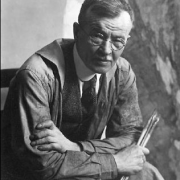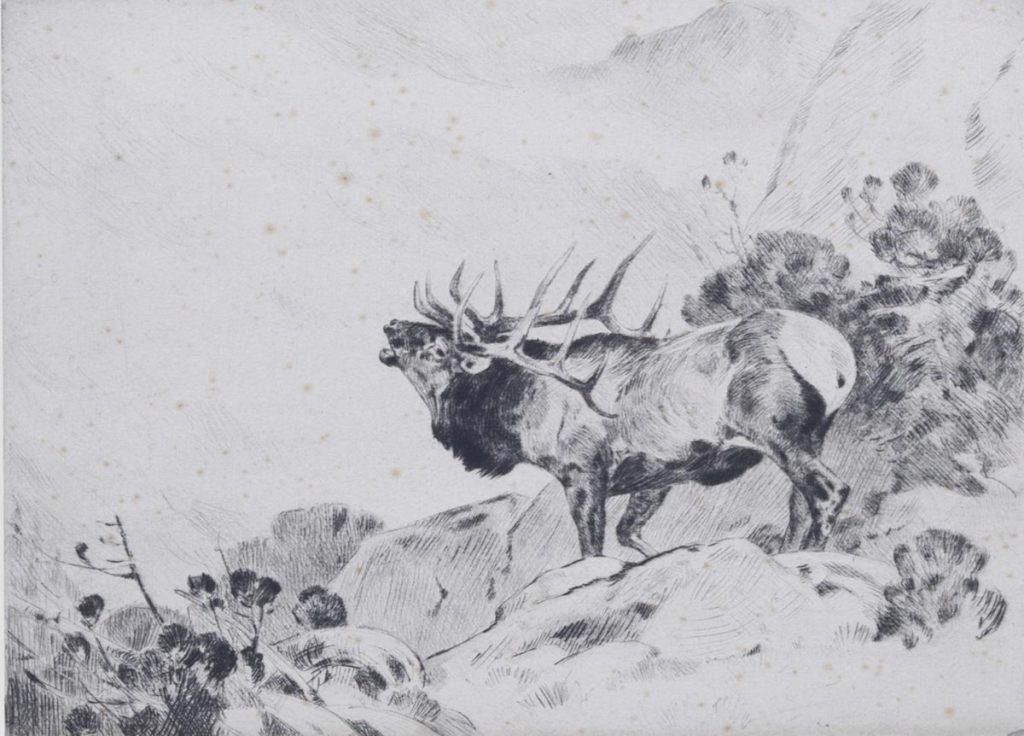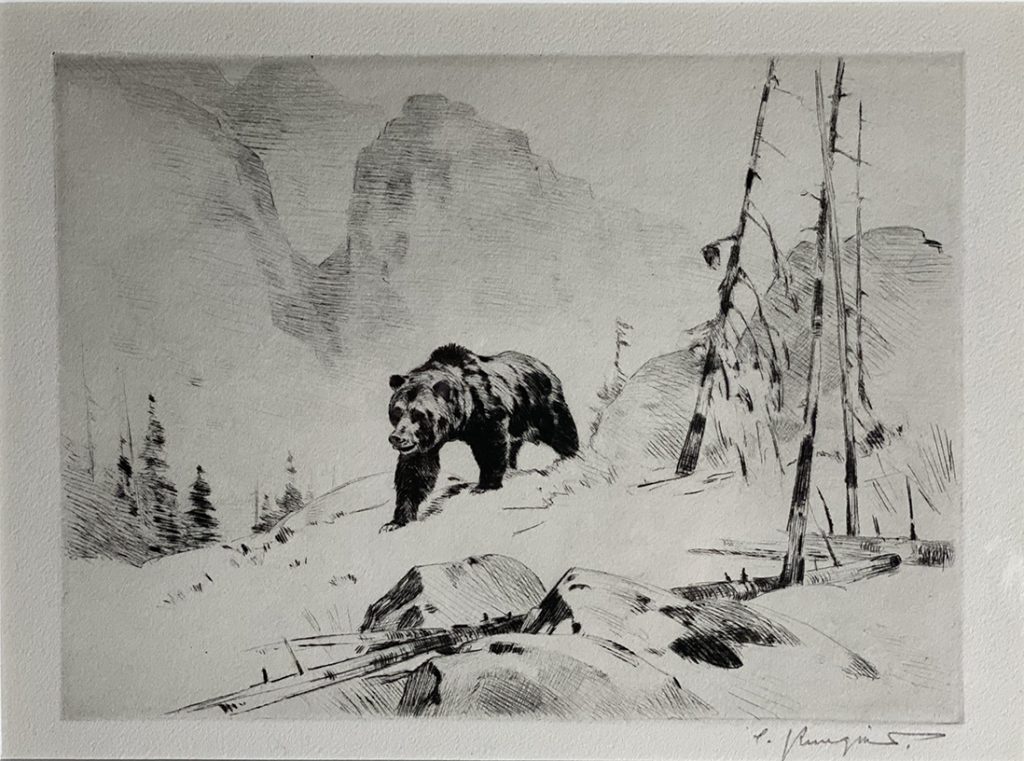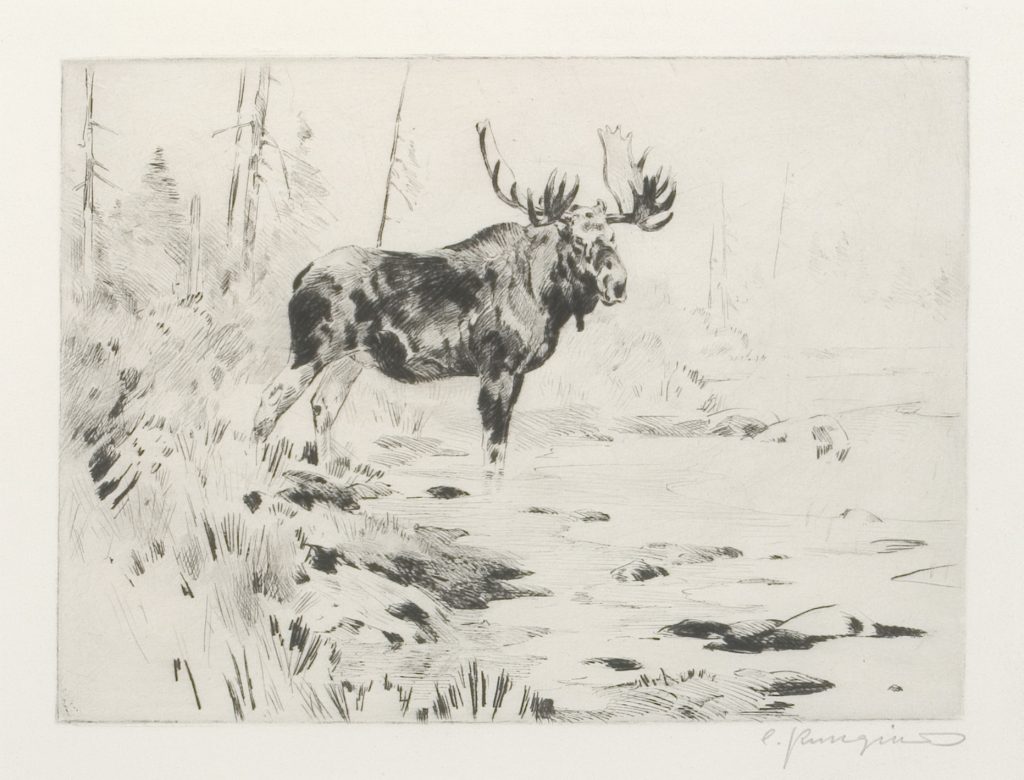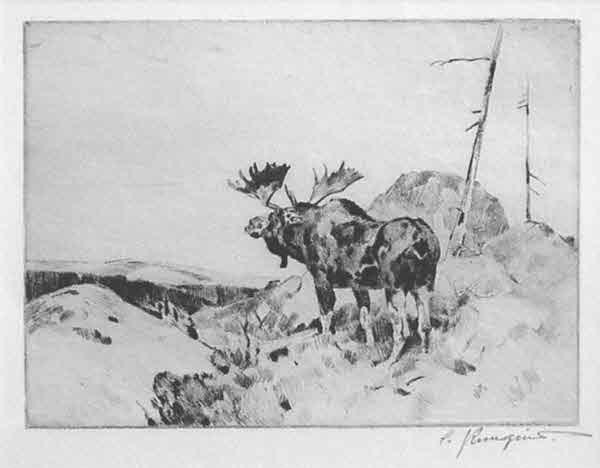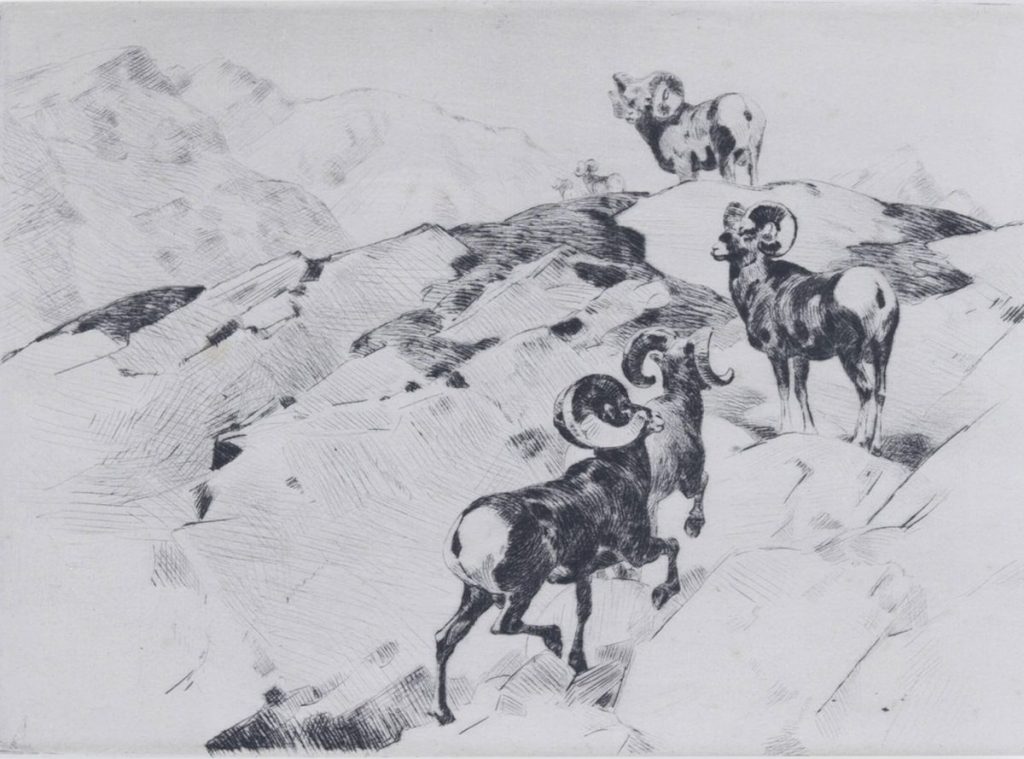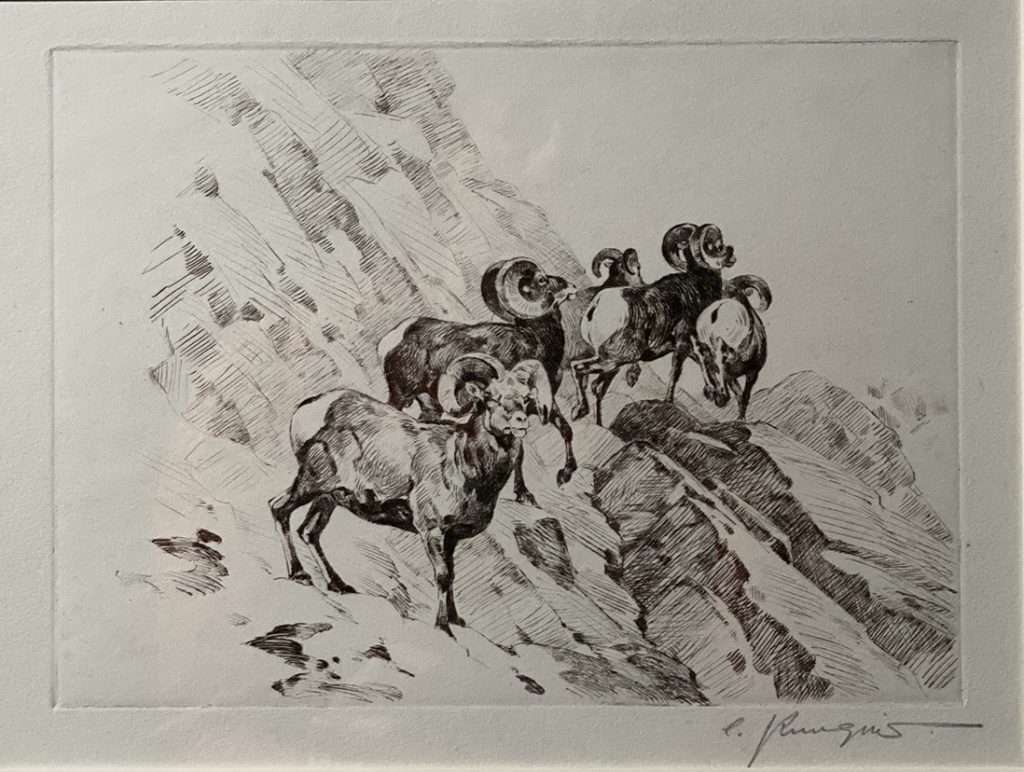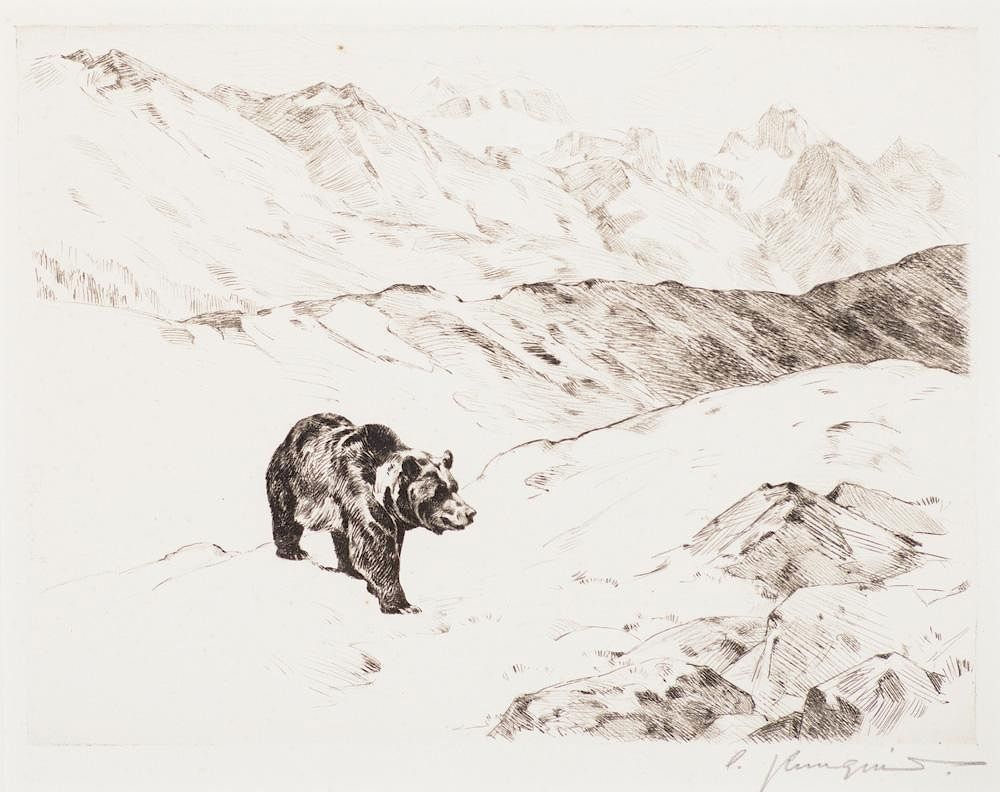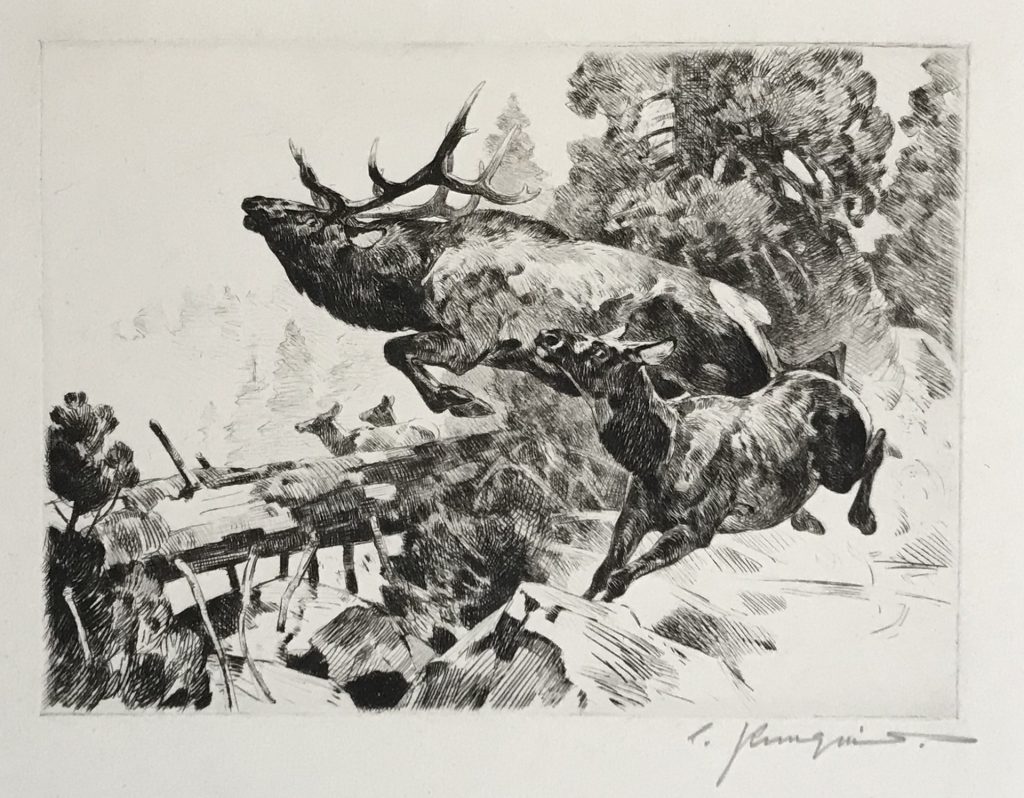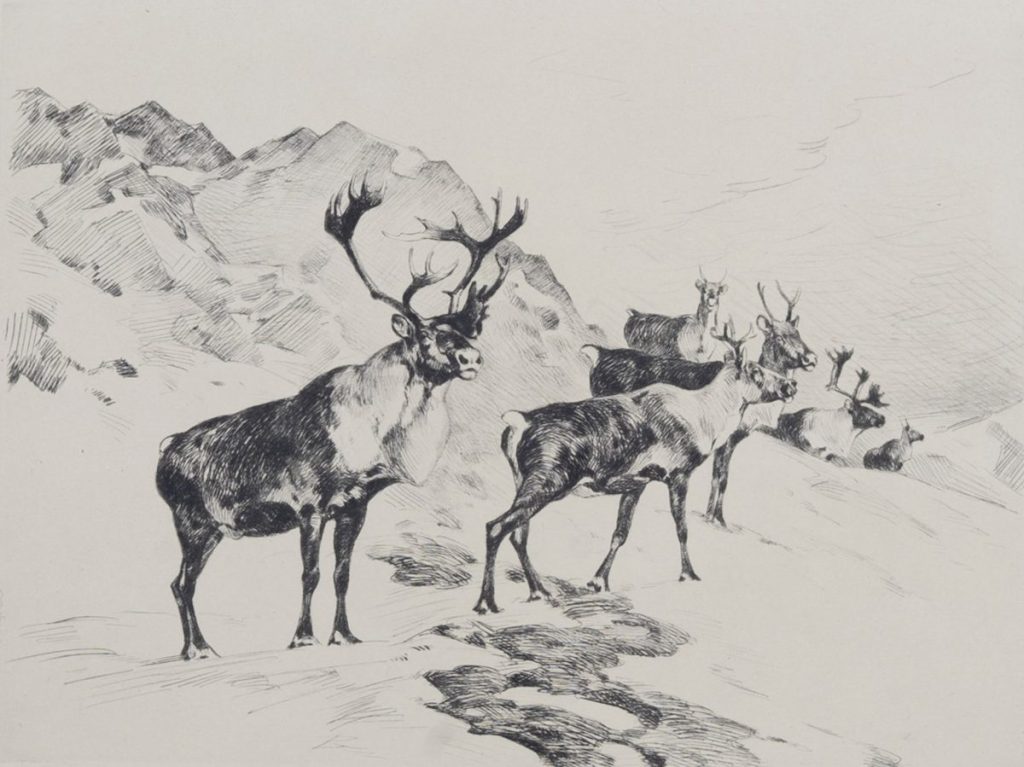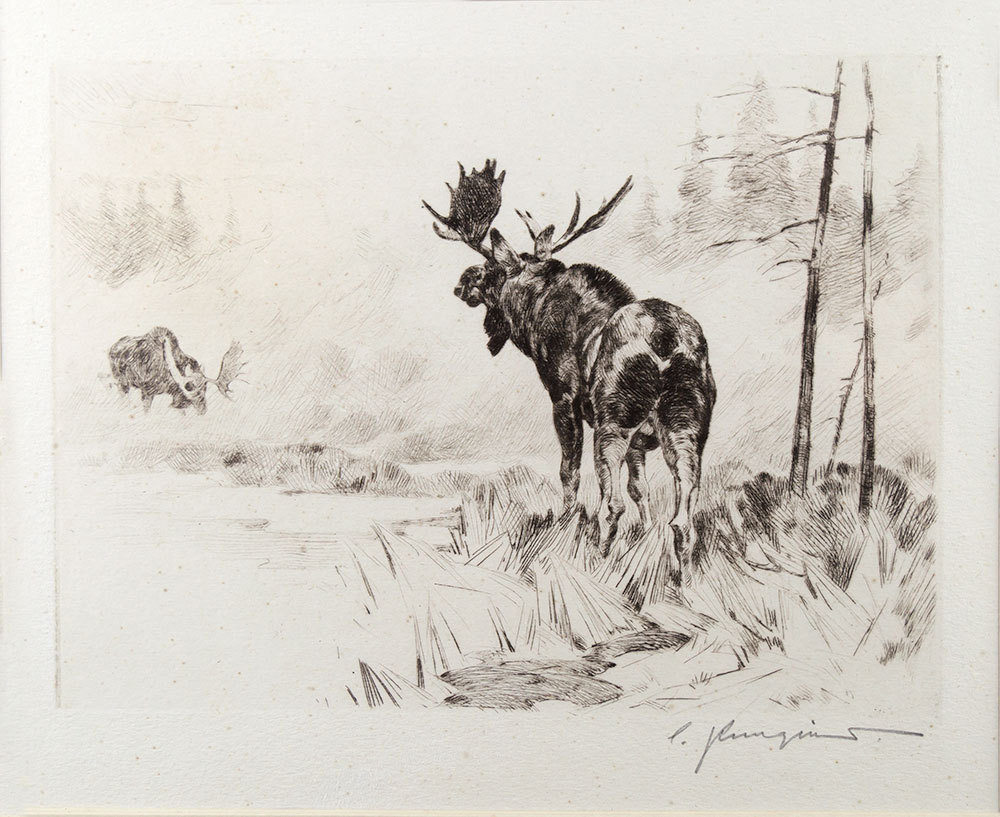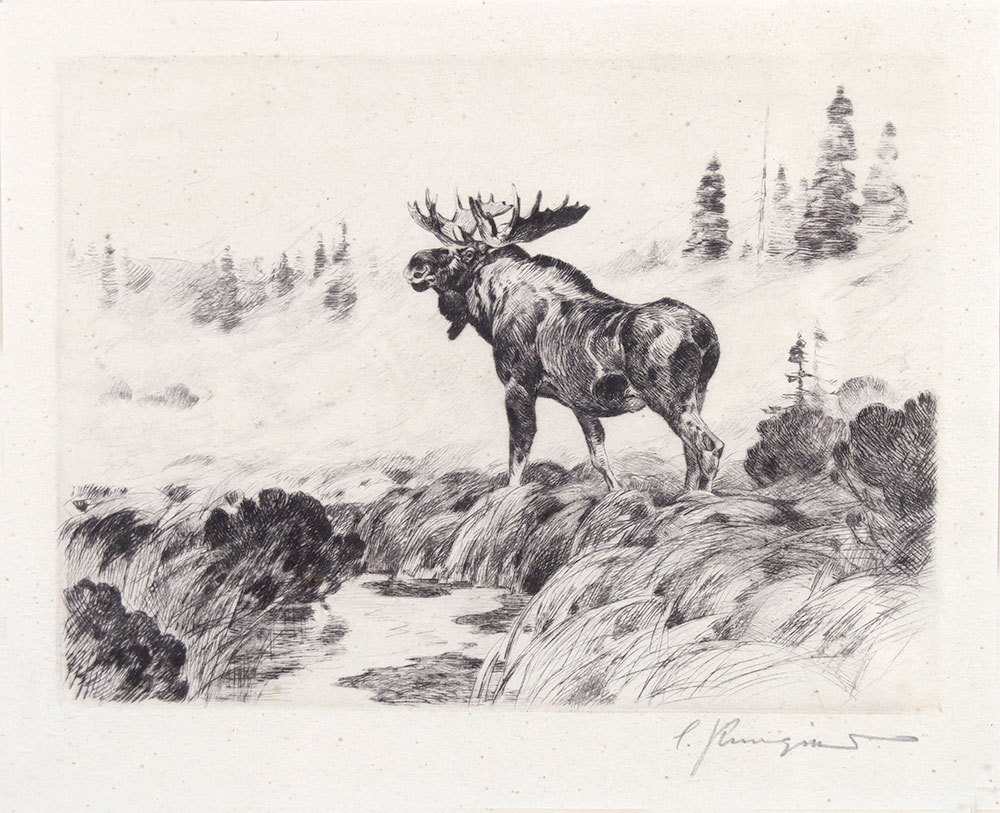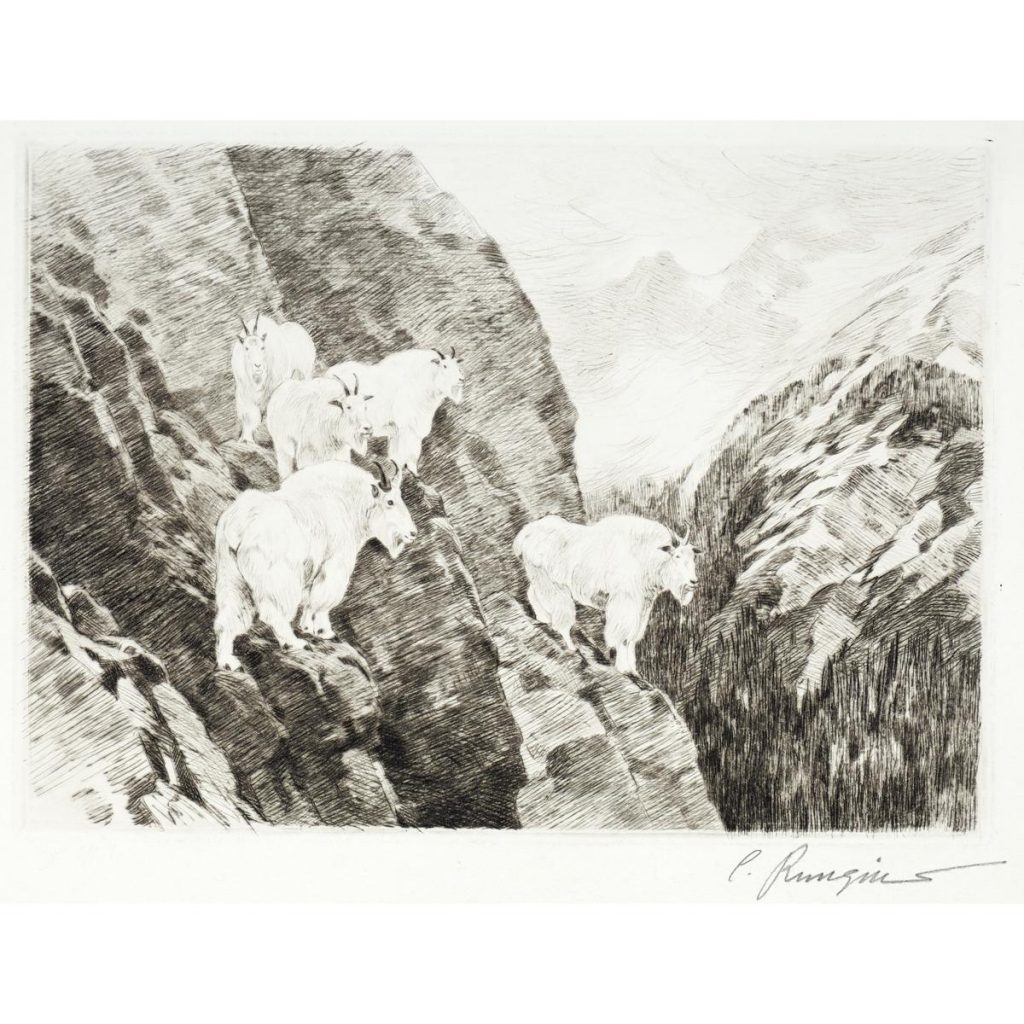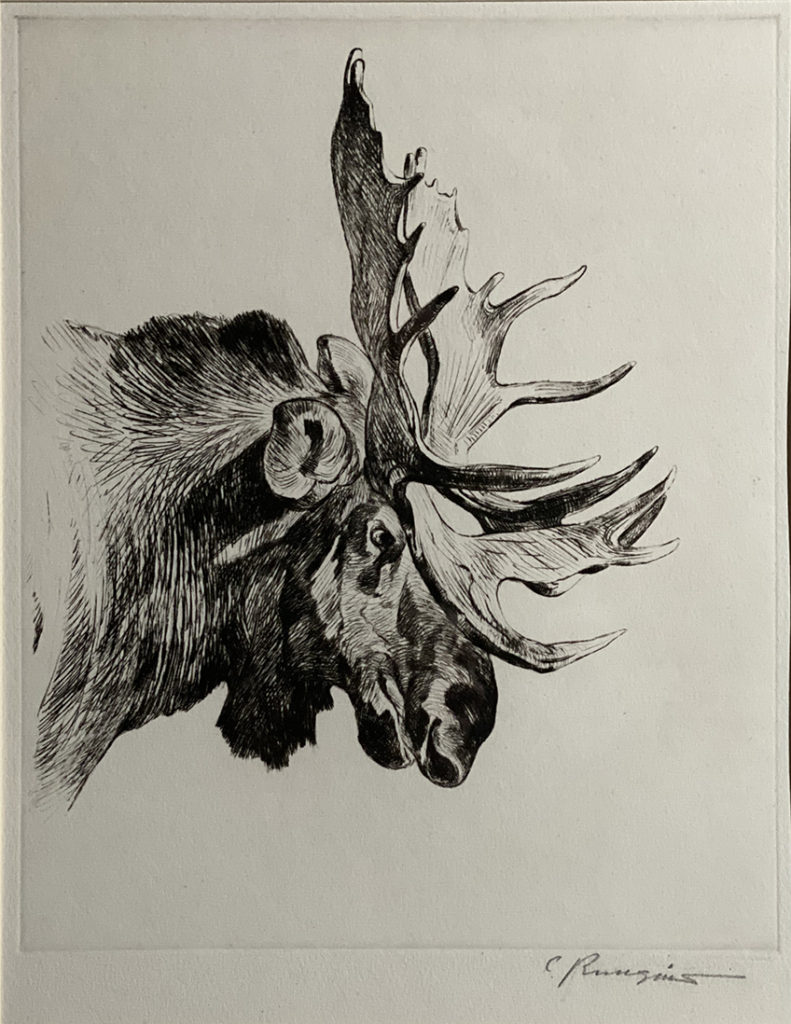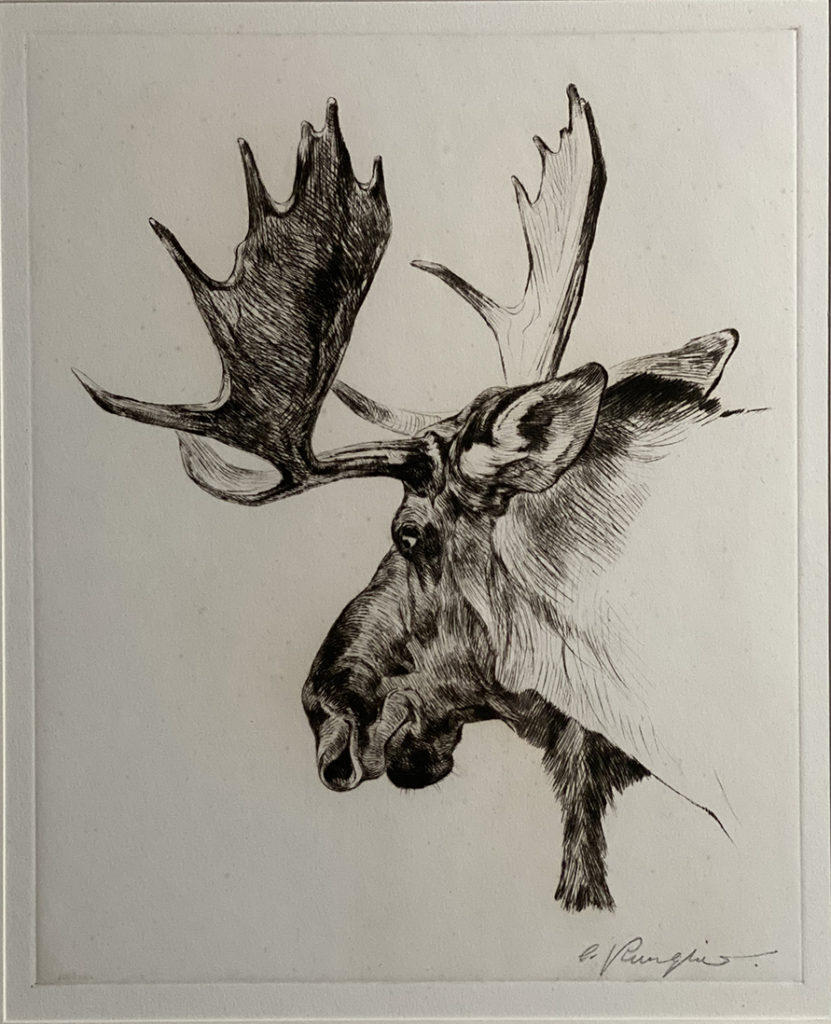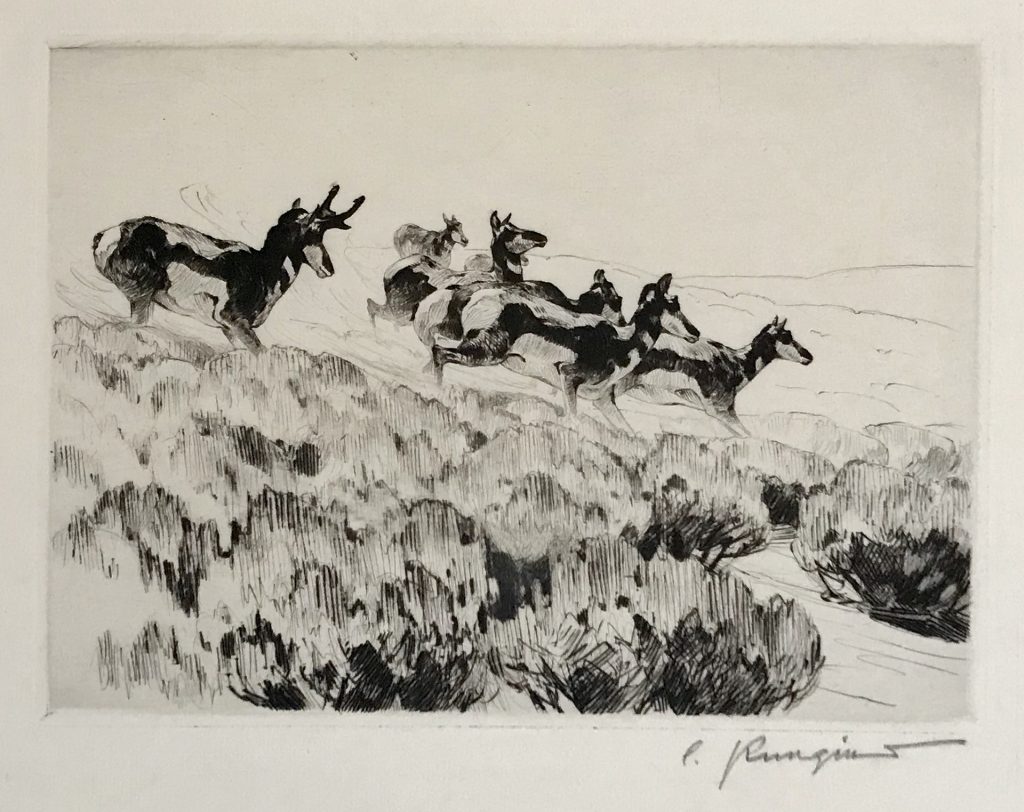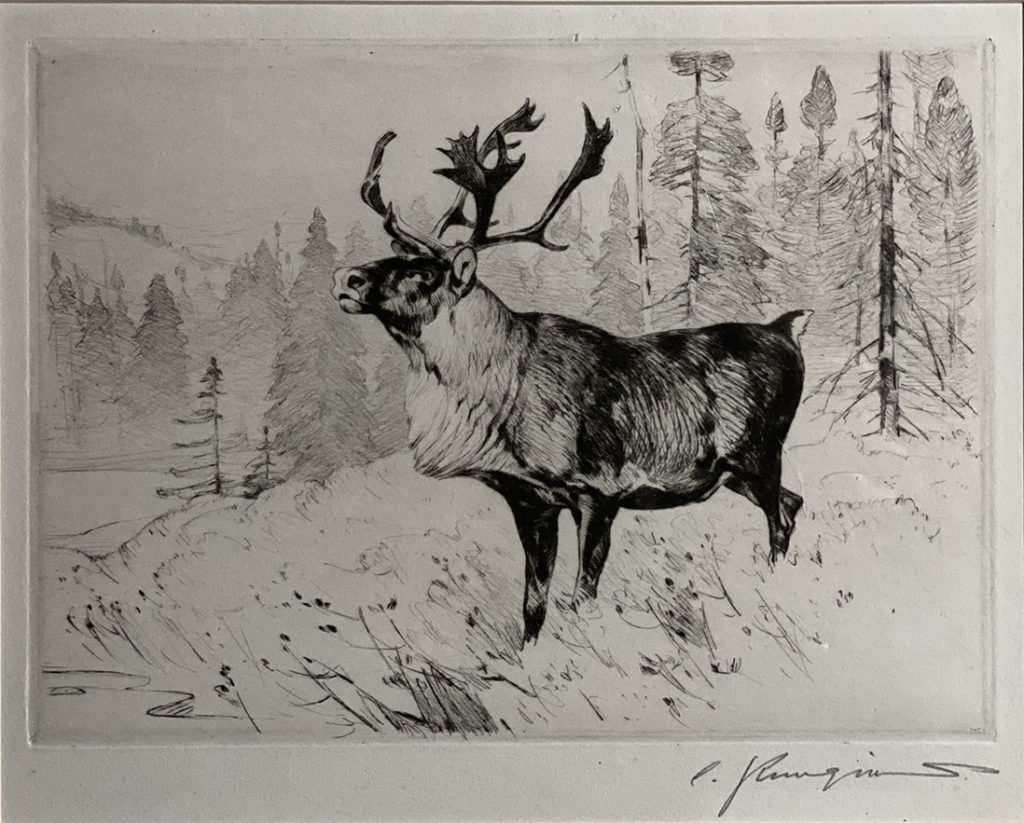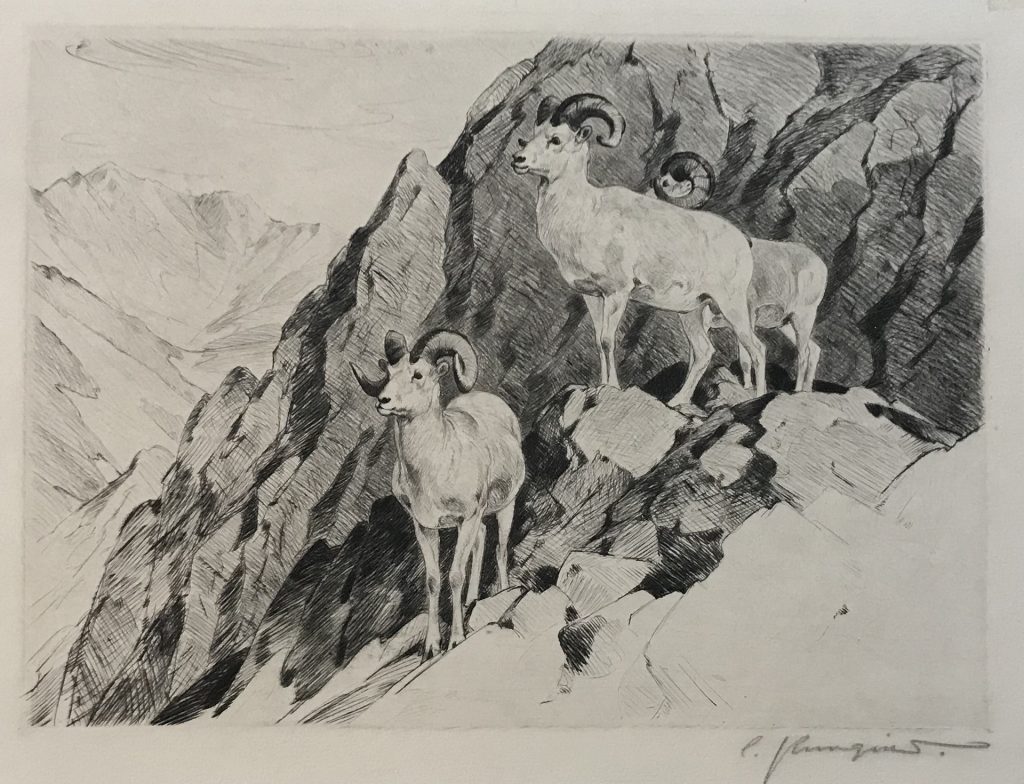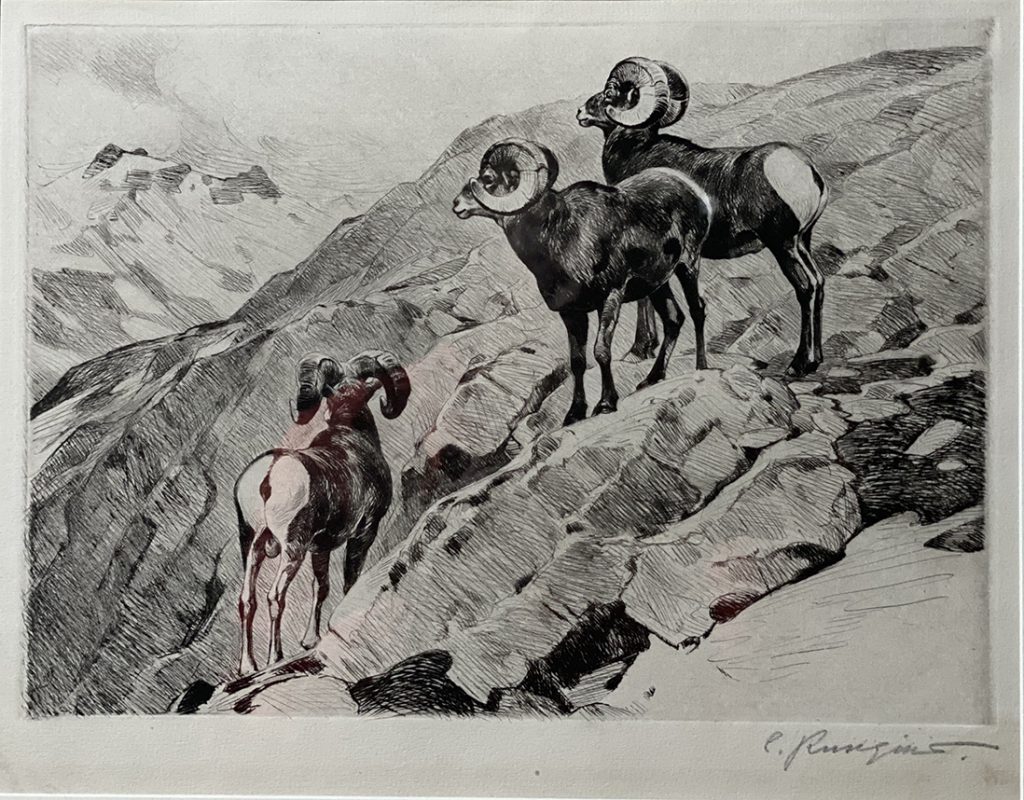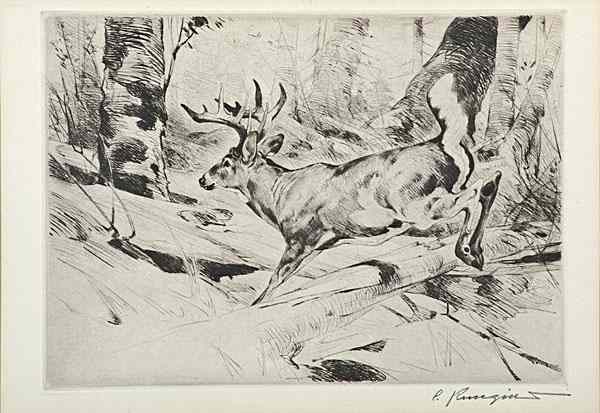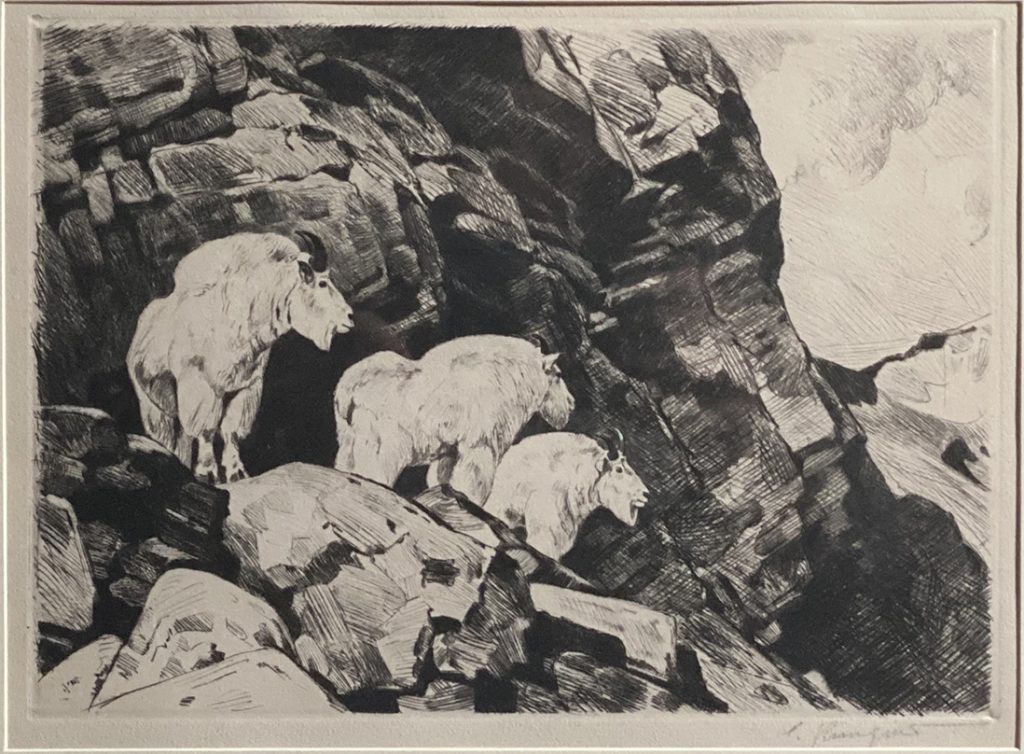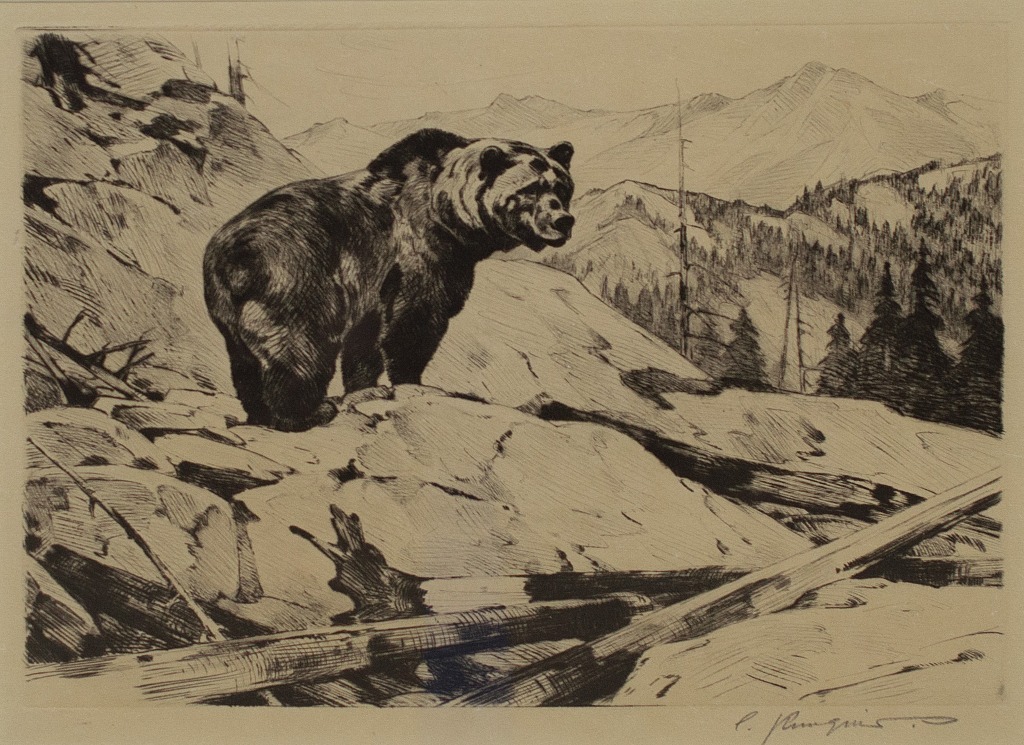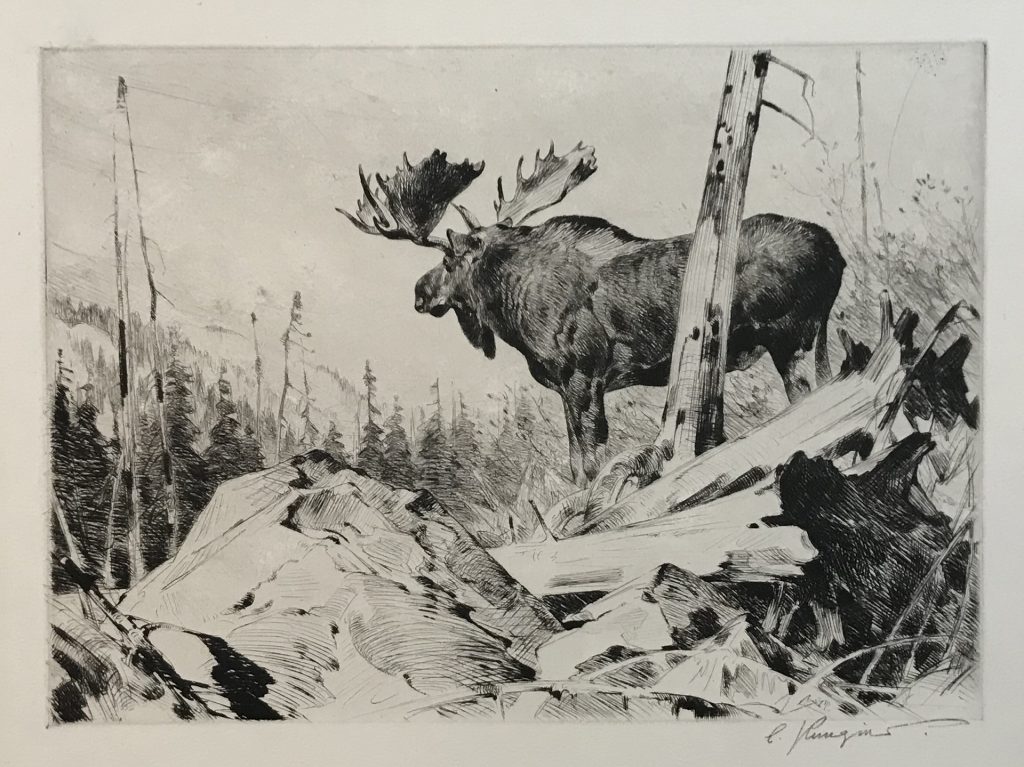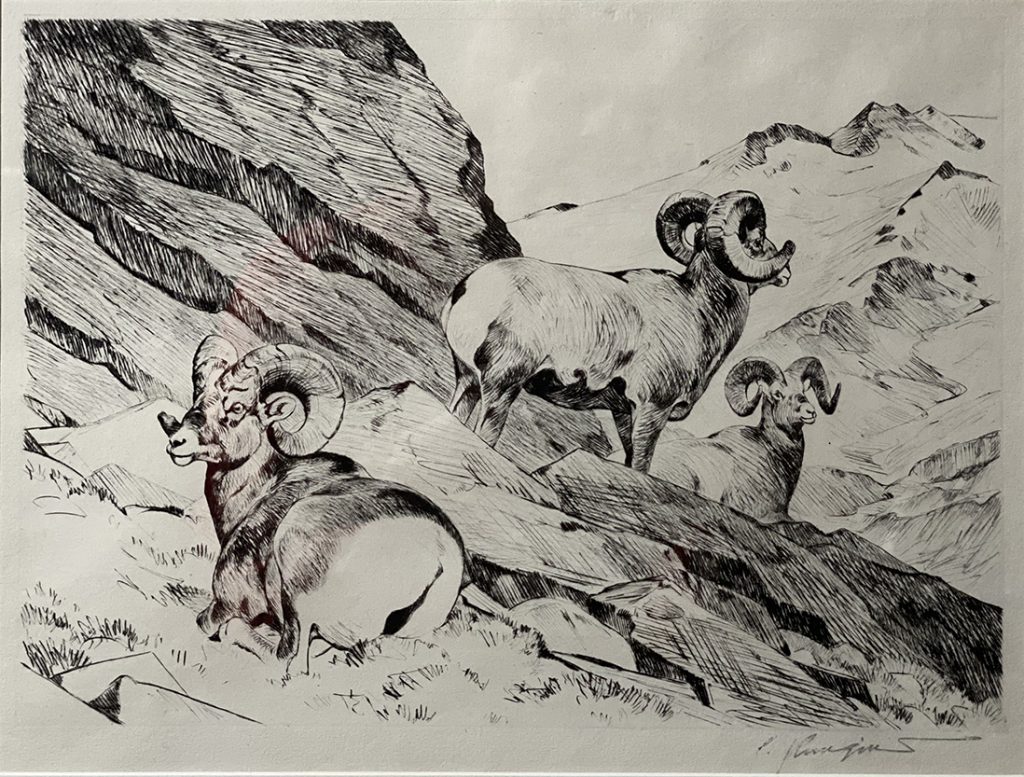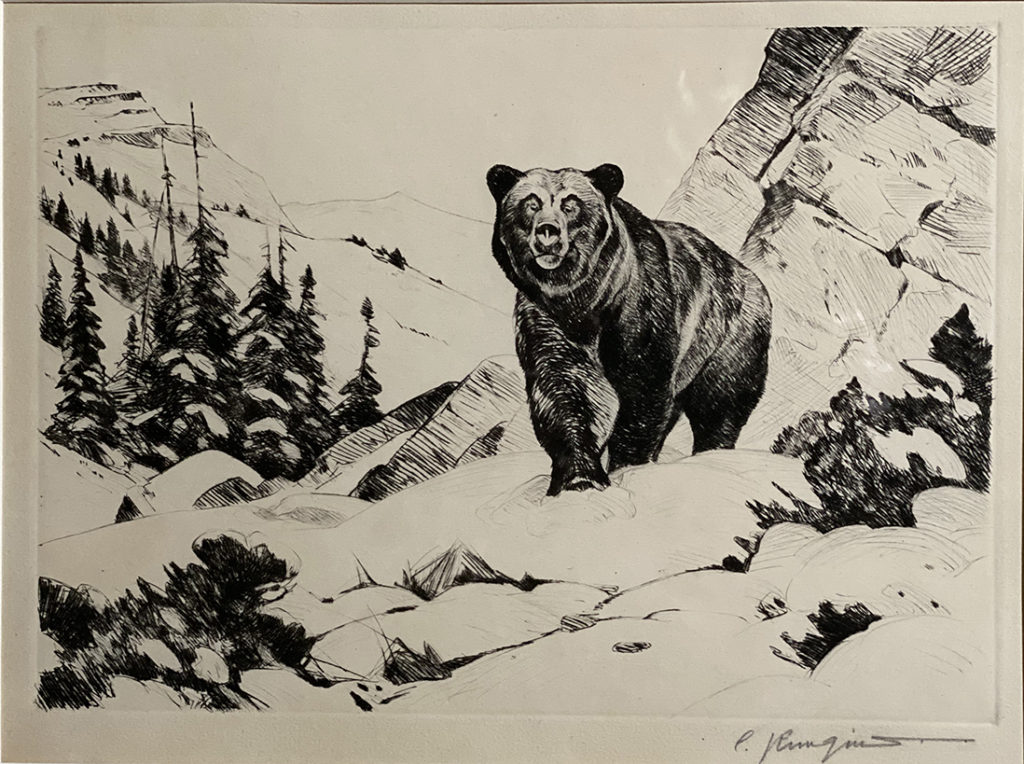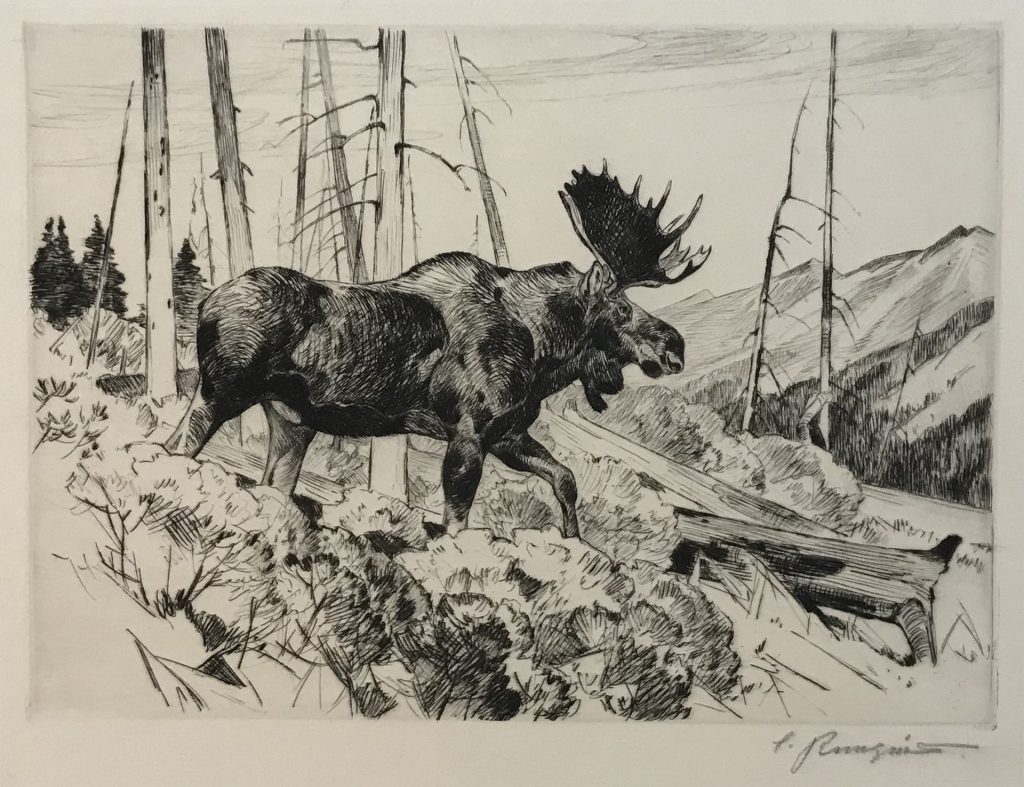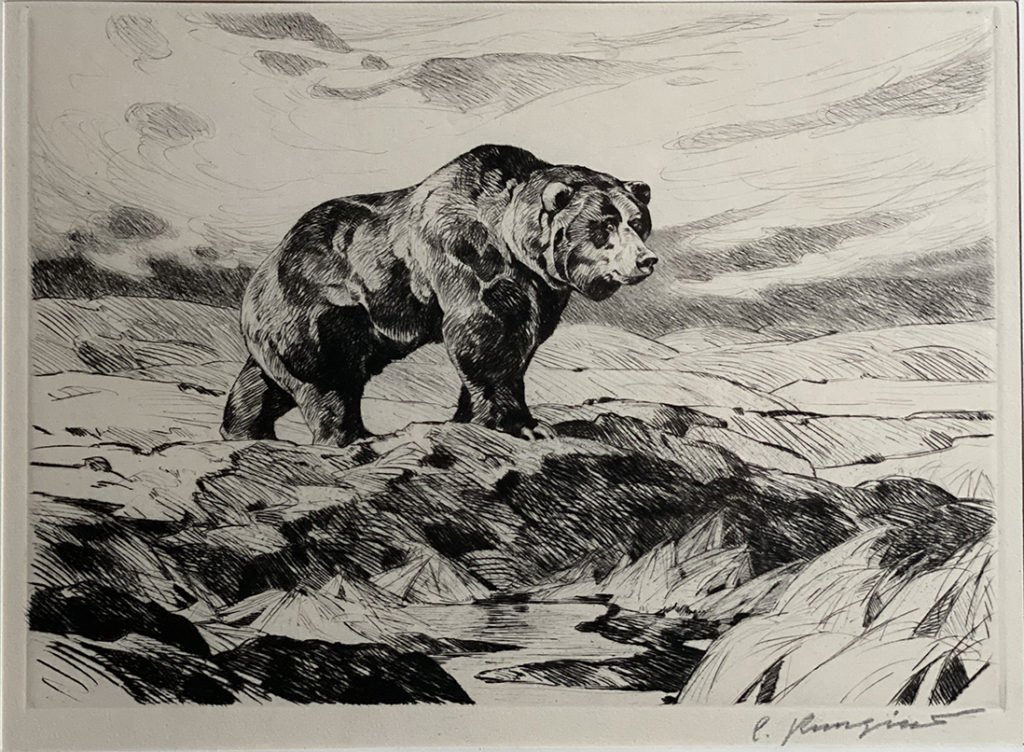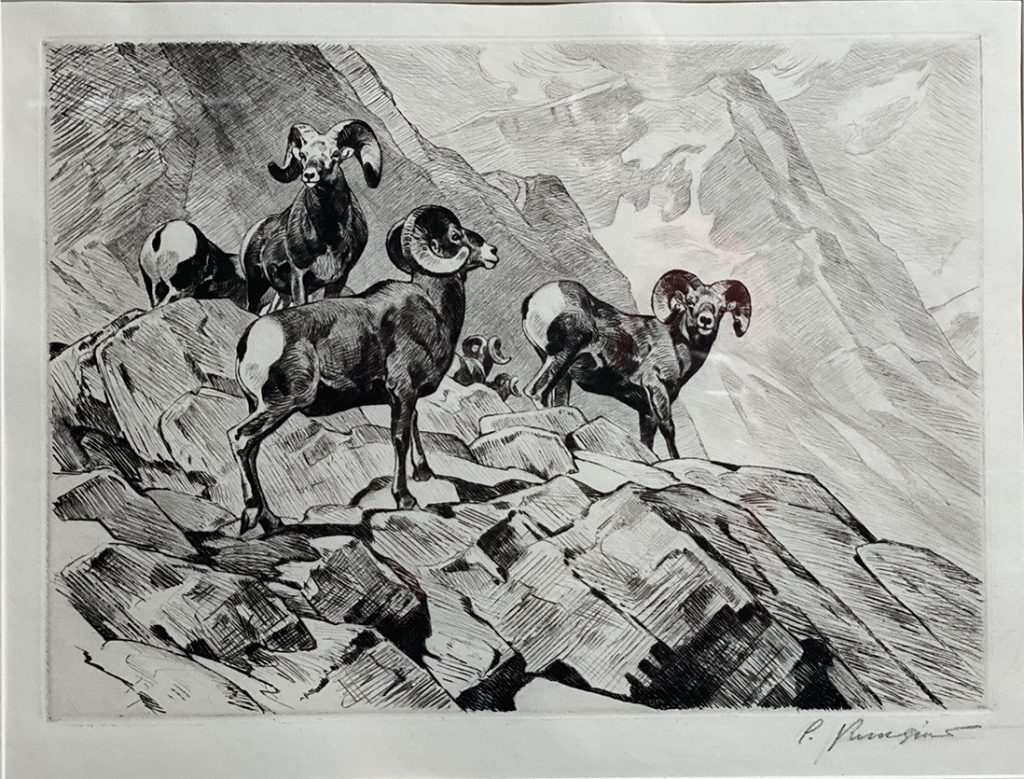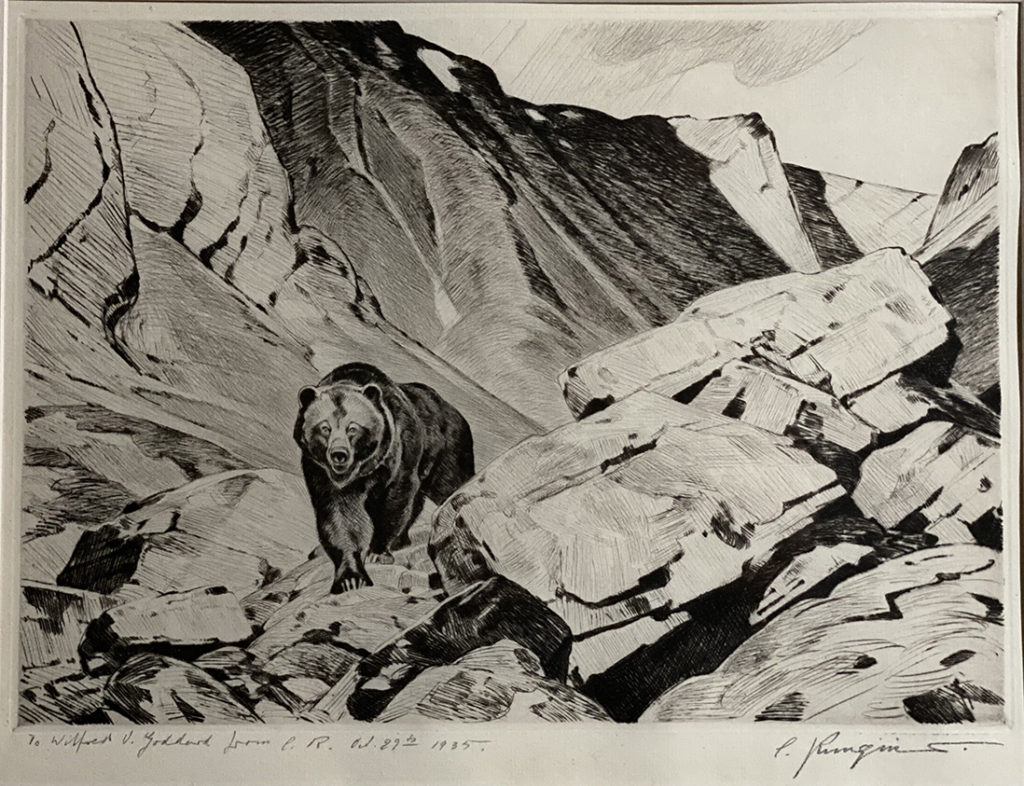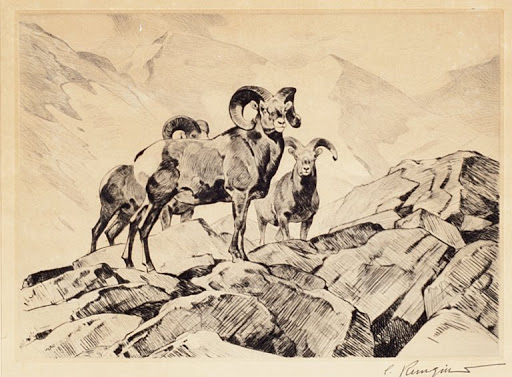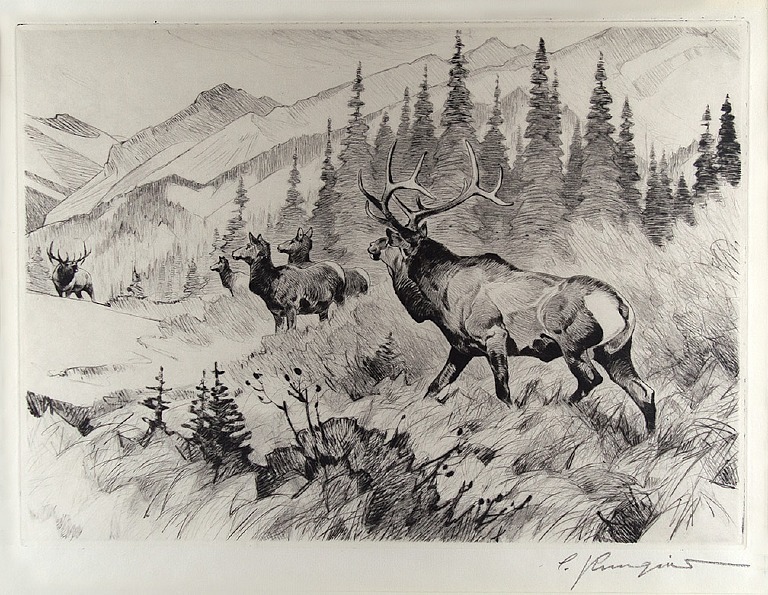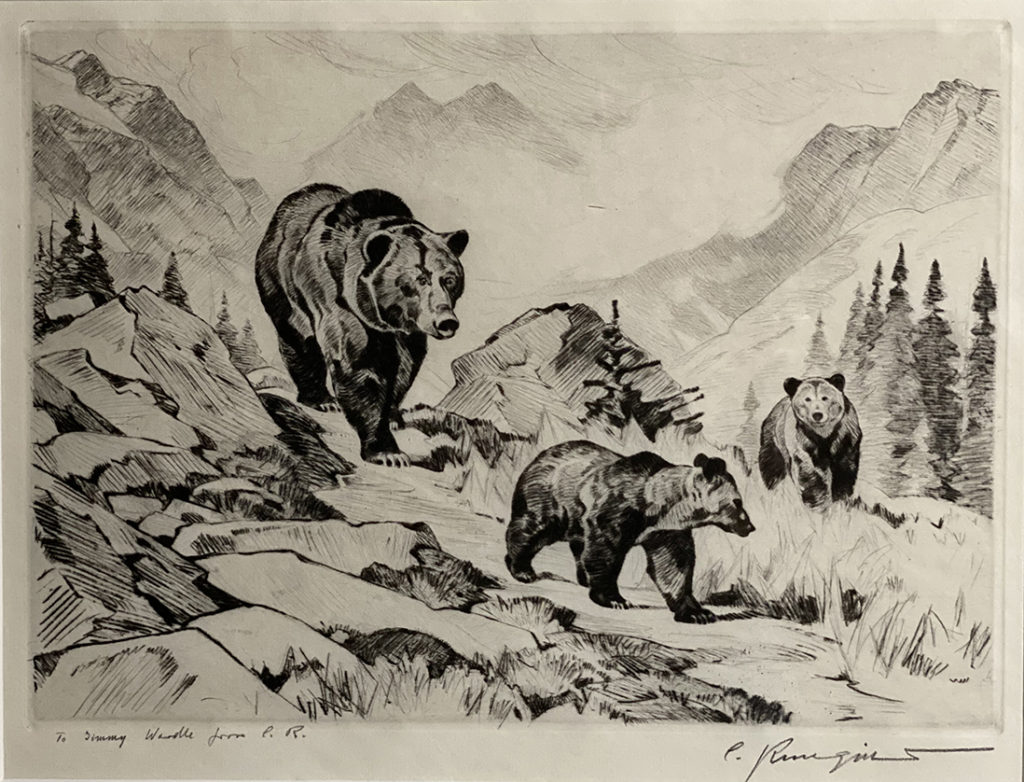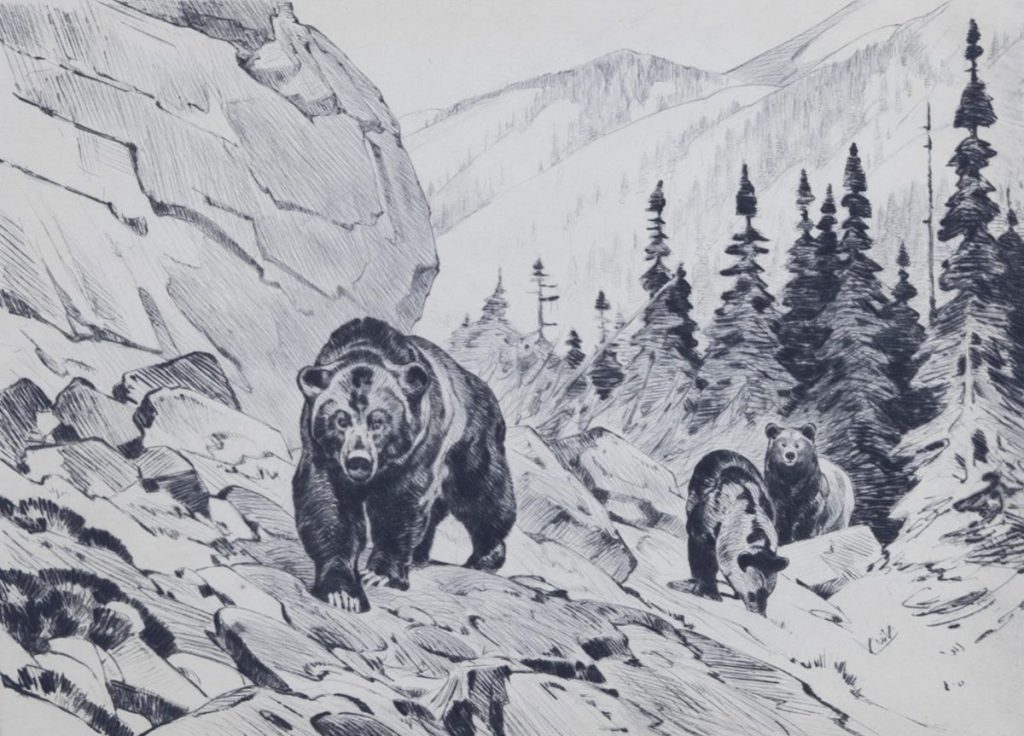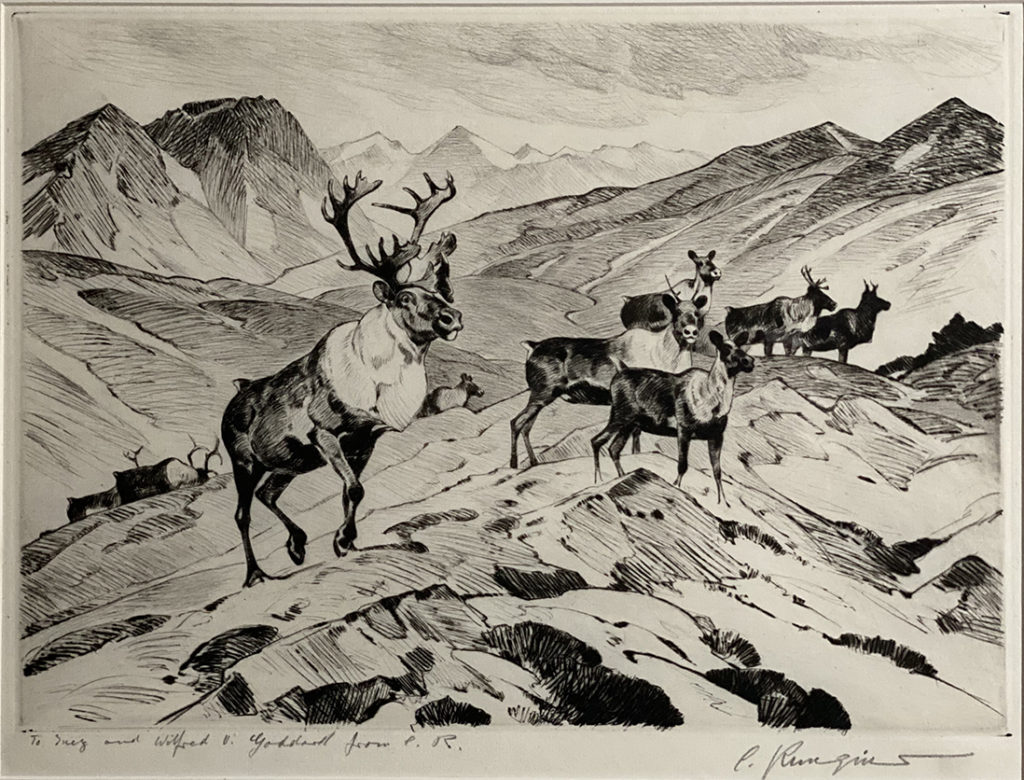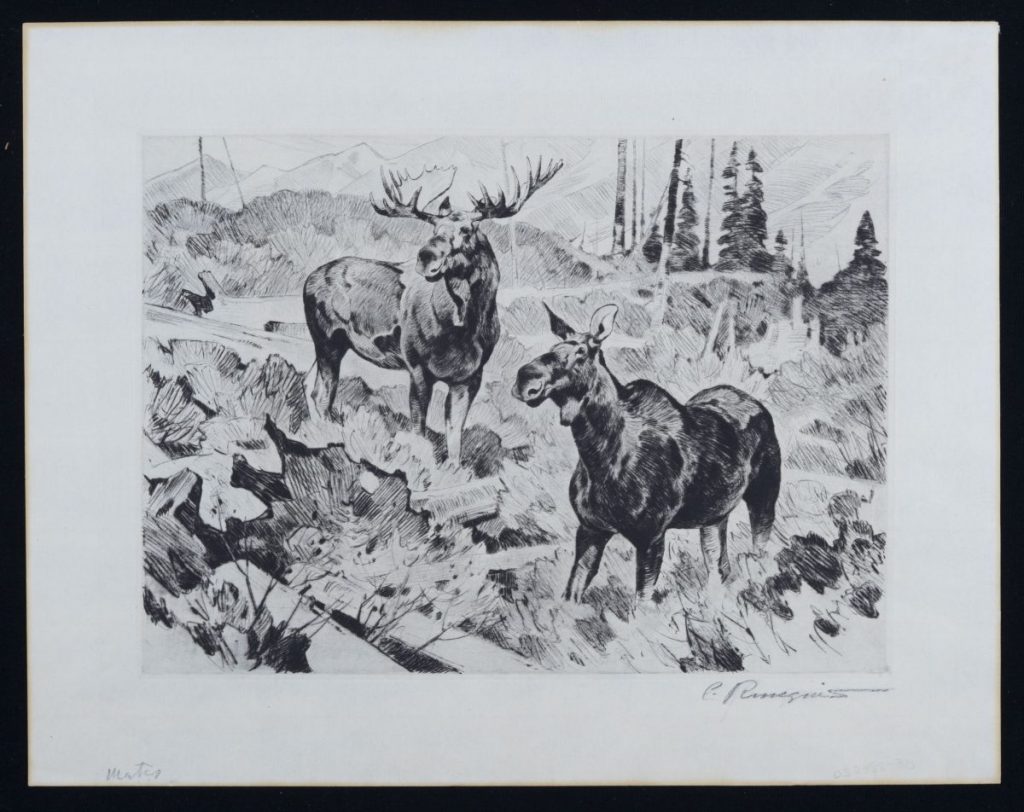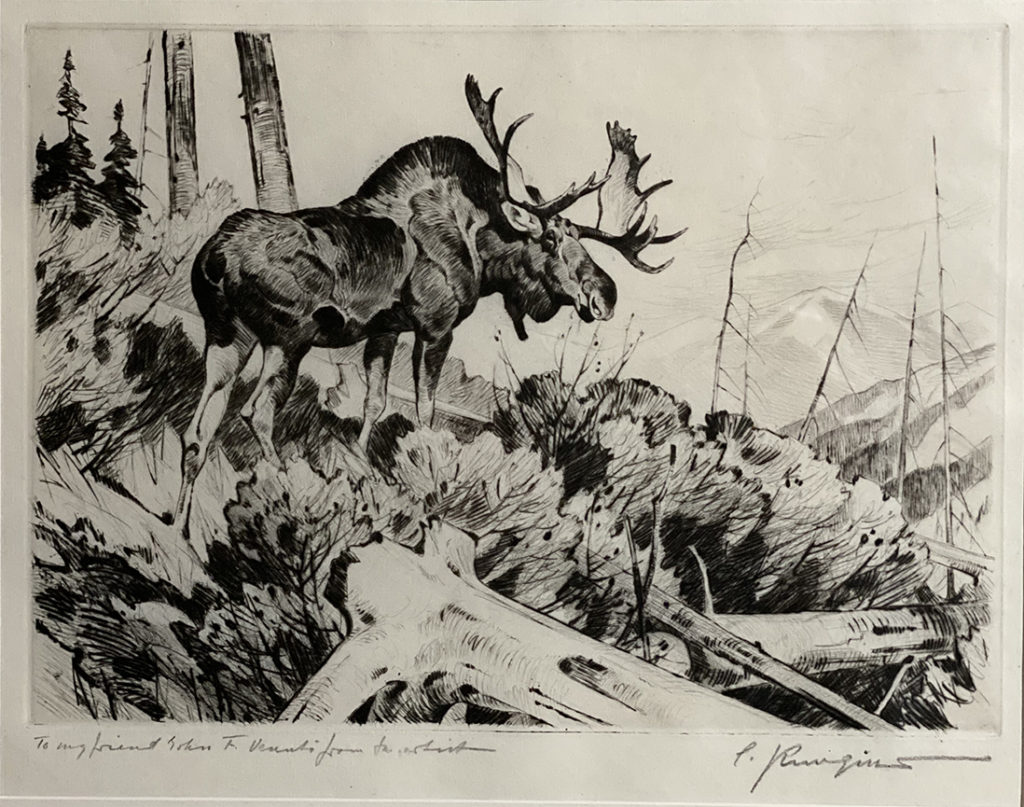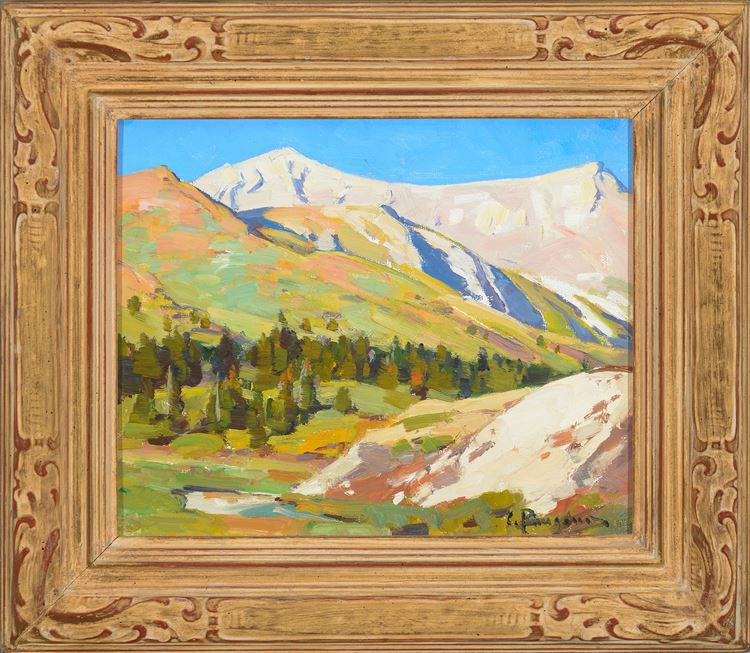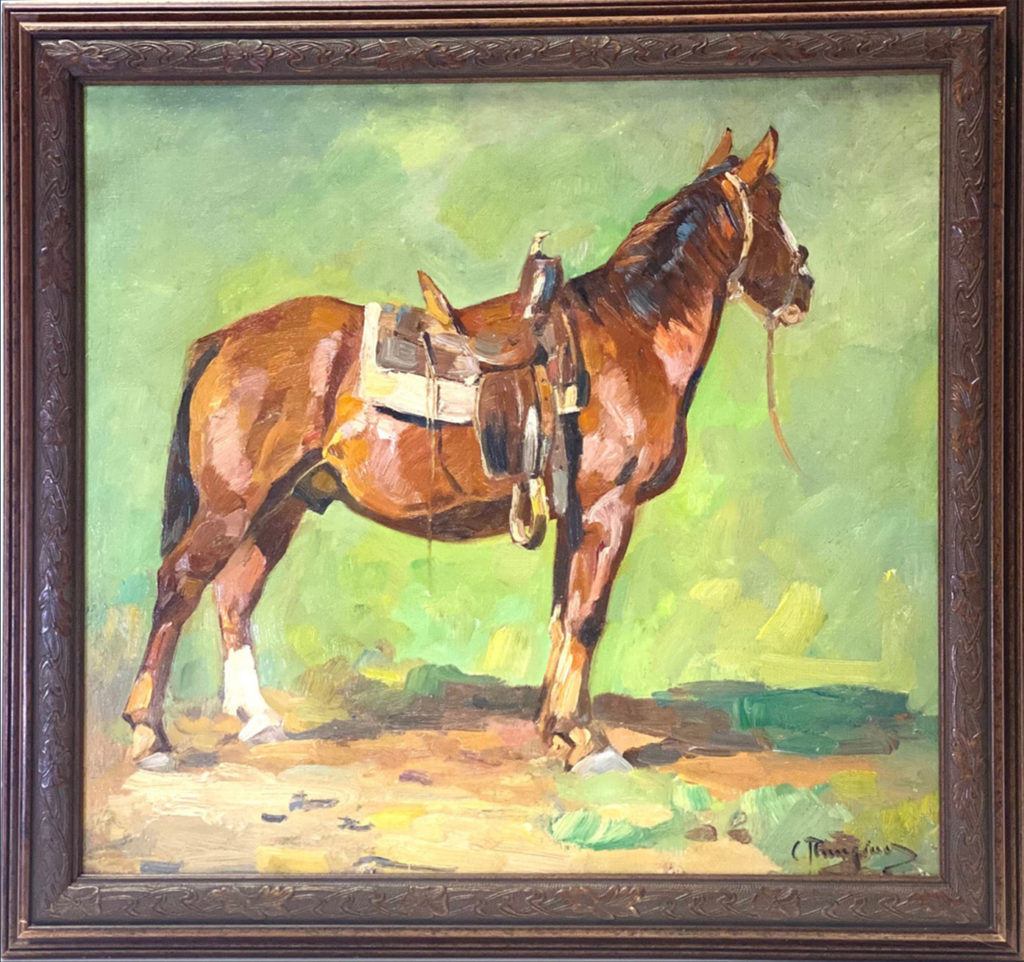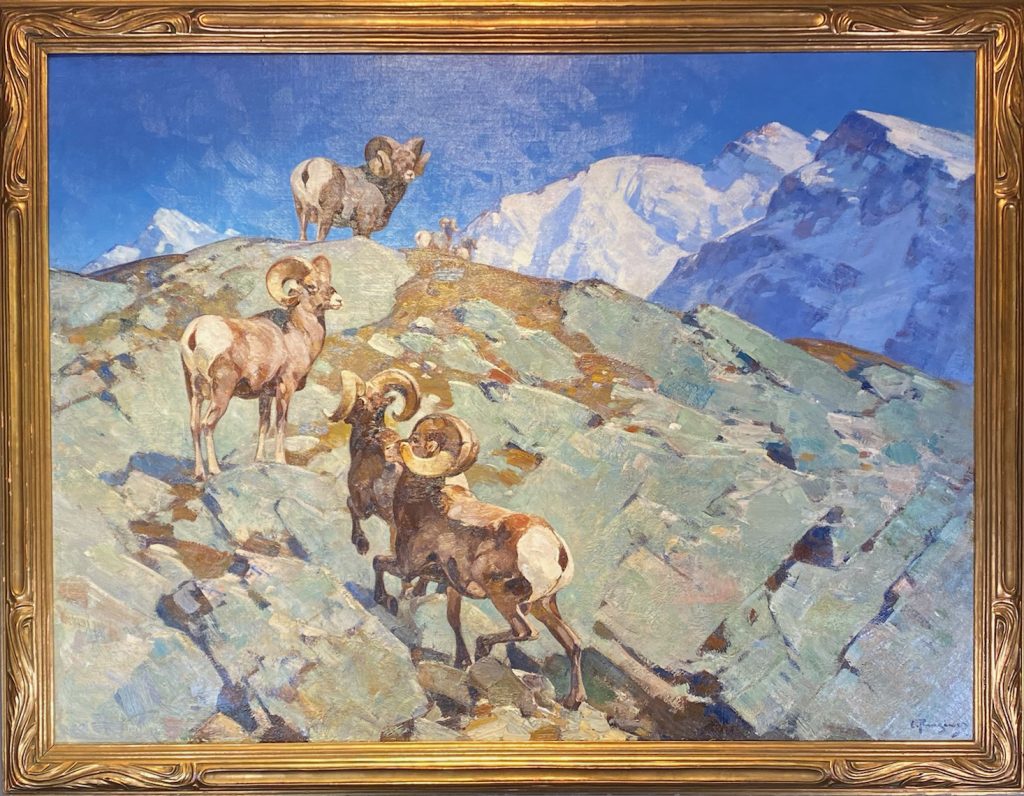1869-1959
Born near Berlin, Germany, Carl Rungius became one of America’s most noted wildlife artists, usually working in plein air or directly from nature. His grandfather was a taxidermist and animal hunter, which gave him early exposure to this subject matter. He was also a hunter of big game from childhood, and eventually his lifestyle merged with his art.
He studied art in Berlin at the Berlin School of Art, the Academy of Fine Arts, and the School of Applied Arts, and one of his teachers was Paul Meyerheim. His career as a painter began in Berlin in 1889, and much of his early work was in the style of German Romanticism and Realism.
He arrived in the United States from his native Rixdorf in 1894, and settled in New York City. He did illustrations for popular magazines, but by 1904 was focused on fine art, and by 1913, was elected an Associate Member of the National Academy of Design. He became a full member in 1920.
He fell in love with the Northwest and West, and much of his painting and hunting career of over fifty years was spent packing into the forests and high country of Montana, Wyoming, Arizona, the Yukon, and Canadian Rockies. His specialty was big game such as mountain goats, sheep, deer, and antelope in dramatic landscape settings.
In 1895, he took his first trip West, heading to Wyoming and Yellowstone. He spent nearly four months on a ranch in northwest Wyoming where “he gained the first true inspirations for his life’s work of depicting western life and animals”. (Hassrick 124). He was a big-game hunter, and then did paintings from the trophies. In late September of that same trip, Rungius visited Yellowstone Park from where he apparently did sketches but no extant paintings from those sketches resulted when he returned to his studio in Brooklyn, New York in November. It is thought that the reason he did no Yellowstone paintings was because no rifles were allowed in the Park.
However, from memory he did other paintings in Academic style with heavy, rich color and tight detailing–much in contrast to the prevailing impressionism. Rungius returned to Wyoming many times in the future, but this first trip was the turning point in his career in that it directed his focus to painting wildlife.
Ultimately it was the Canadian Rockies that held him, and, living in New York most of the year, he built a summer studio home, “The Paintbox” in Banff, Alberta in 1922, and Theodore Roosevelt became a great admirer and collector of his work. After the artist’s death in 1959, the Glenbow Foundation maintained his studio as a museum.
During these extensive travels, he also became friends with many frontier people and did a series of oil paintings depicting their life. These works, of which there were not many completed, are much sought after for their accuracy and sense of spontaneity.

